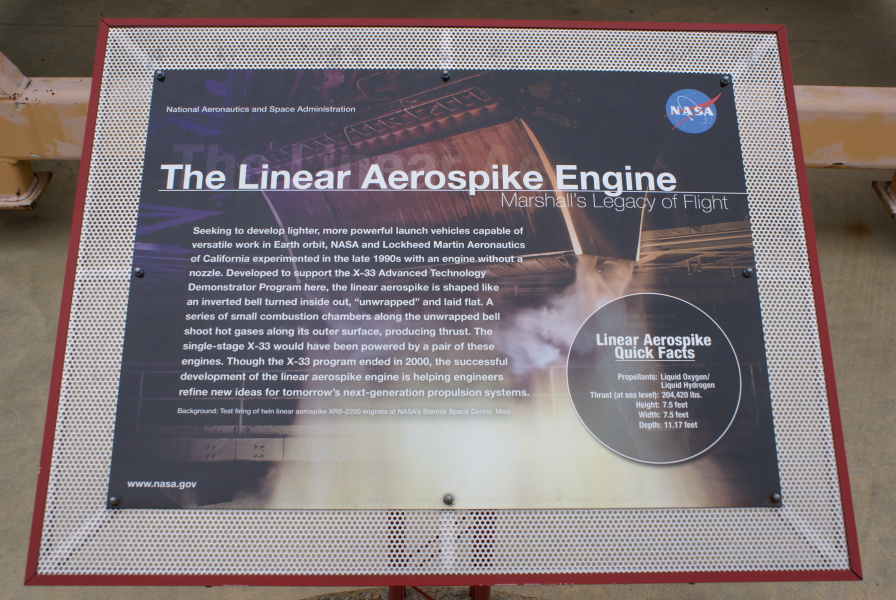| Prev |
heroicrelics.org Marshall Space Flight Center Site Index XRS-2200 Linear Aerospike Engine Gallery |
Next |
dsc83976.jpg
The sign accompanying the linear aerospike engine. It reads
The Linear Aerospike Engine
Marshall's Legacy of Flight
Seeking to develop lighter, more powerful launch vehicles capable of versatile work in Earth orbit, NASA and Lockheed Martin Aeronautics of California experimented in the late 1990s with an engine without a nozzle. Developed to support the X-33 Advanced Technology Demonstrator Program here, the linear aerospike is shaped like an inverted bell turned inside out, "unwrapped" and laid flat. A series of small combustion chambers along the unwrapped bell shoot hot gases along its outer surface, producing thrust. The single-stage X-33 would have been powered by a pair of these engines. Though the X-33 program ended in 2000, the successful development of the linear aerospike engine is helping engineers refine new ideas for tomorrow's next-generation propulsion systems.
Linear Aerospike Quick Facts
Propellants: Liquid Oxygen/Liquid Hydrogen Thrust (at sea Level): 204,420 lbs. Height: 7.5 feet Width: 7.5 feet Depth: 11.17 feet
While this particular linear aerospike engine was developed in the 1990s, it represented Rocketdyne's third incarnation of a large aerospike engine. See my XRS-2200/RS-2200 Linear Aerospike Engine Data Sheets page for additional information and for additional information on the X-33 program.

| Time picture taken | Thu Jul 19 10:59:50 2012 |
| Location picture taken |
Building 4205 Marshall Space Flight Center Huntsville, AL |
| Prev |
heroicrelics.org Marshall Space Flight Center Site Index XRS-2200 Linear Aerospike Engine Gallery |
Next |